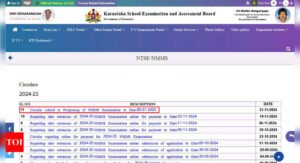What is the Federal Supplemental Educational Opportunity Grant accepted by the Massachusetts Institute of Technology? Check its eligibility criteria, aid amount, and other details here

In today’s highly competitive world, obtaining higher education has become essential for students aiming for a stable and comfortable career. For both domestic and international students, the United States has long been a preferred destination for higher education, thanks to its prestigious institutions. Among these, the Massachusetts Institute of Technology (MIT) stands out as a beacon of excellence.
MIT has consistently proven why it ranks among the best universities globally. According to the latest QS World University Rankings 2025, MIT holds the top spot, while it is ranked second in THE World University Rankings 2025. Additionally, it claims the number one position in the Global Employability Rankings 2025.
Naturally, thousands of students aspire to pursue their higher education at such a distinguished institution. However, gaining admission to MIT is both challenging and expensive. To support students, the university offers several scholarships and grants. Today, we will explore one such grant: the Federal Supplemental Educational Opportunity Grant.
What is the Federal Supplemental Educational Opportunity Grant?
The Federal Supplemental Educational Opportunity Grant (FSEOG) is a financial aid program designed to assist undergraduate students with exceptional financial need. This grant is administered directly by the financial aid office at each participating institution. It is important to note that not all schools take part in the FSEOG program. Therefore, students should confirm with their school’s financial aid office whether this grant is available at their institution.
How to apply for the Federal Supplemental Educational Opportunity Grant?
According to the official website of Federal Student Aid, students must complete the Free Application for Federal Student Aid (FAFSA) form to qualify for the Federal Supplemental Educational Opportunity Grant (FSEOG). The FAFSA helps colleges determine a student’s financial need. The FSEOG does not need to be repaid, except under certain circumstances.
Conditions under which a student must repay the FSEOG:
- The student withdrew early from the program for which the grant was awarded.
- The student’s enrollment status changed, reducing their eligibility for the grant.
- The student received outside scholarships or grants that decreased their need for federal student aid.
- The student received a TEACH Grant but failed to meet the requirements of their TEACH Grant service obligation.
- The student received Federal Pell Grant funds from more than one school at the same time.
How much money will you get?
According to the official website of the Federal Student Aid, students can receive between $100 and $4,000 per year, depending on their financial need, the timing of their application, the amount of other aid they receive, and the availability of funds at their school. Each participating school is allocated a certain amount of funds each year from the U.S. Department of Education’s Office of Federal Student Aid. Once the full amount has been awarded to students, no additional awards can be made for that year.
How to maintain the grant and the eligibility criteria
According to the official website of Federal Student Aid, students must remain enrolled as undergraduates and must not have previously earned a bachelor’s degree. Eligibility for the aid is determined annually by completing the FAFSA form. The institution will award the FSEOG each year based on eligibility and other factors.
Additionally, to continue receiving federal student aid, students must make satisfactory academic progress. This means maintaining good grades and completing enough courses to stay on track to graduate within the timeframe expected by the school and within federally mandated time limits.
For more information, students can visit the official website of the Federal Student Aid, or can click here.








